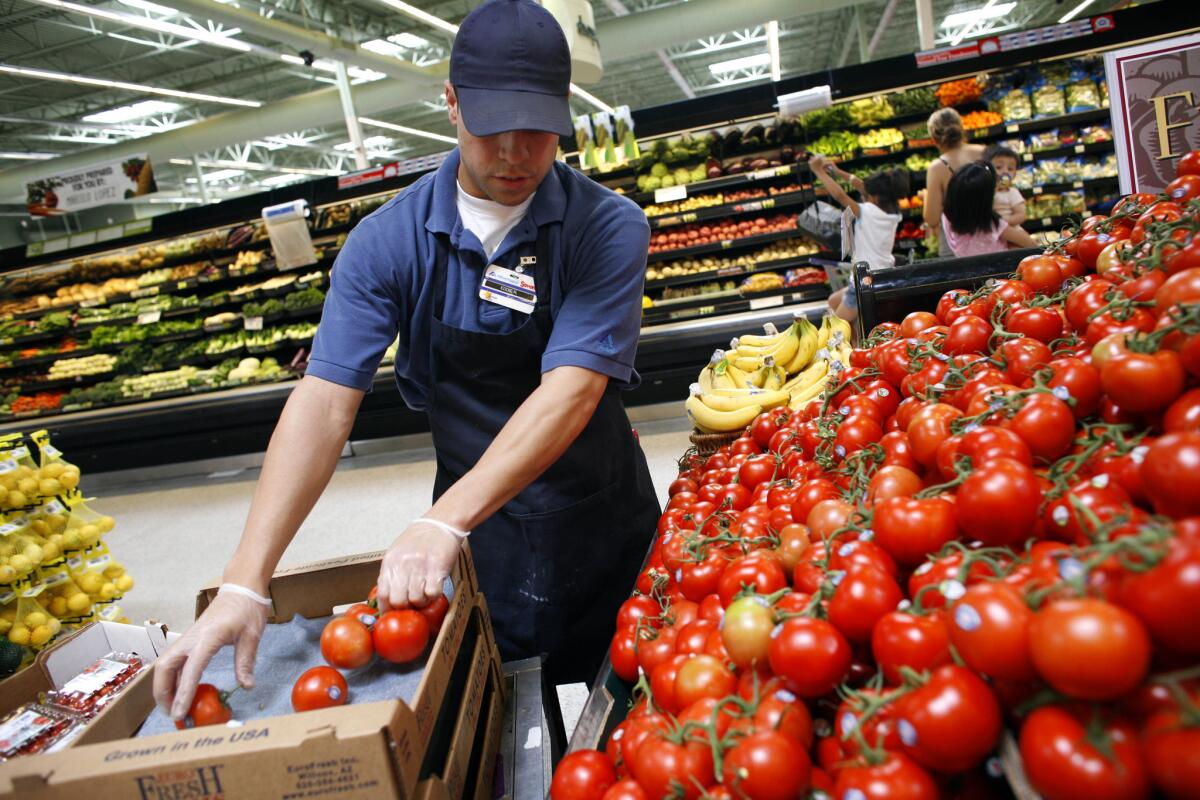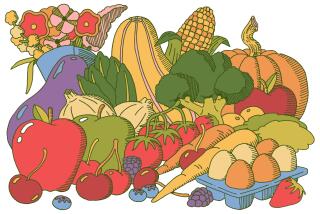Please, don’t buy a peach in January: When the fault is ours and not the supermarkets’

There’s a fascinating interview with a produce buyer on the Modern Farmer website. Fascinating and maybe a little horrifying.
Taken at face value, former supermarket produce buyer Ron Pelger’s statements explain exactly what’s wrong with produce today.
Among his comments:
“When it comes to produce, a lot of customers, they’re going mostly on appearance. It’s like shopping for a used car. You go to the lot, you’re gonna look over each car real good. You see a little scratch or dent, you decide not to buy it. Customers do the same thing with apples or eggplants.”
CALIFORNIA COOKBOOK: Find hundreds of terrific recipes
And:
“Customers expect us to have a 52-week program on all our items .… I need places that will give a consistent year-round product …. There can’t be any intervals when the product isn’t available.” In fact, he says, the only item in the produce department today that isn’t available all year round is cranberries. “There’s no such thing as ‘in season’ anymore.”
Sad? You bet. And it’s tempting to shake our fingers at the supermarket industry and curse the sorry state to which they’ve brought us.
But if we’re going to be honest with ourselves, no one forced us to go along. In fact, if you look at each of those incidents closely, you’ll see that the markets were simply responding to their shoppers’ wishes.
Perhaps in an ideal world they should have stepped in and explained to us why we didn’t really want what we thought we did – that cosmetically perfect fruits and vegetables often don’t have the best flavor, and that fruit that’s been chilled and shipped from another hemisphere is only a poor imitation of what we think we’re buying.
And perhaps in an ideal world, Bravo would still be showing Abel Gance’s “Napoleon” instead of “Real Housewives of Miami.”
Supermarkets are notoriously low-margin businesses – profits typically run 1% to 3%. Most of them are more interested in staying in business than in persuading us to eat better. When their customers demand something, even if they know better, they’re going to sell it.
At a certain point, we all have to recognize that change starts with us. The next time you’re in the market, look beneath the surface glow at that piece of fruit. And for heaven’s sake, pass up that Chilean peach and enjoy a California mandarin.
ALSO:
Mad for mandarins, with 6 recipes
Winter squash to the rescue, with 8 recipes
Making the most of winter greens, with 6 recipes
More to Read
Eat your way across L.A.
Get our weekly Tasting Notes newsletter for reviews, news and more.
You may occasionally receive promotional content from the Los Angeles Times.











